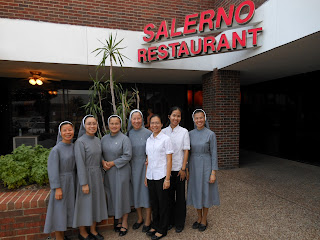Jello
 The bubbles slowly rose to the top.
The bubbles slowly rose to the top."Perfect! Let's add the sugar then the flavoring."
"Isn't it cool that thạch is made from seaweed?" Ni Hà said triumphantly as we slowly poured the thick liquid into the mold.
"Seaweed?" Sr. Gwen Huyền's nose slightly wrinkled in distaste.
"Aaaah... you know what Jello is?" I questioned casually. Sr. Gwen has a fondness for Jello.
"Gelatin!"
"What is gelatin?" I pursued off-handedly, with a slow grin.
She looked at me warily.
90.1 KERA
In 1896, the best selling cookbook of the era was published, "The Boston Cooking School Cook-Book."
Interesting news for national public radio.
It was the Victorian period and Fannie Farmer, the author, included many recipes like mock turtle soup and jellies.
Or Jello as we call them today.
Jellies were made by boiling calves' feet for hours.
The method is much more efficient today to extract the collagen or gelatin.
The material (cow and pig bones and hooves) remains the same.
Fascinating bits of history on the Jello website.
But not this bit.
Gelatin is also used in marshmallows, pills (to make them easier to swallow), and cosmetics (face creams, shampoos, and bath bubbles).
The lowly feet of the pig is not to be despised.
Nor those that empty our trash or work in other countries to give us low costs at the mall.
"So, would you rather eat seaweed or pigs' feet?" I asked playfully.
ps1. Photo of Ni Hà and a bowl of dessert - green thạch (agar agar - type of seaweed), mung beans, and red beans.
ps2. What is Jello? http://recipes.howstuffworks.com/question557.htm
ps3. Jello website http://brands.kraftfoods.com/jello/
ps4. Complicated issue of sweatshop jobs http://wichitaliberty.org/economics/sweatshops-best-alternative-for-workers-in-many-countries/
ps5. Fannie Farmer story on NPR http://www.npr.org/templates/story/story.php?storyId=130536078



Comments
Post a Comment